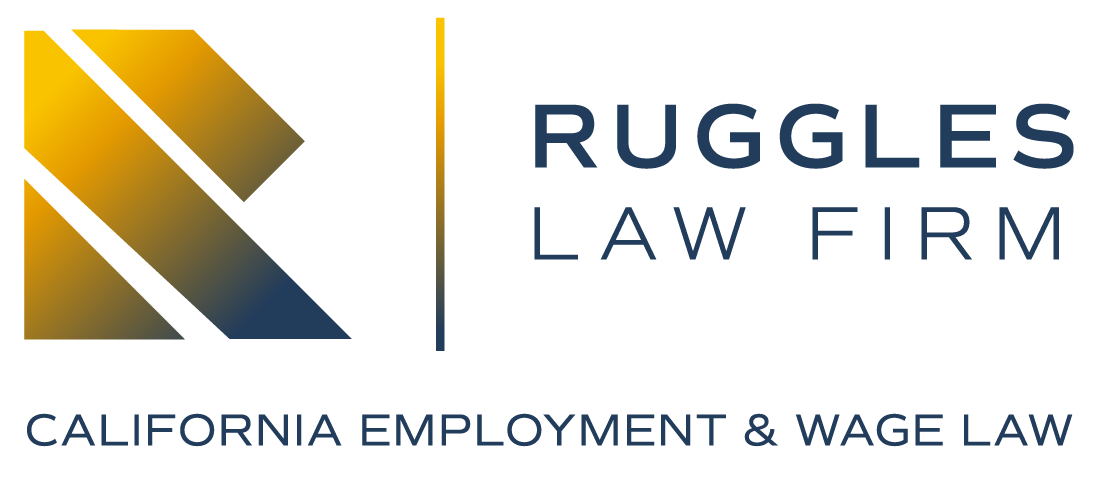Most regular people get lost very quickly when confronted with legal terminology, making it very difficult to understand what is going on in a lawsuit. To help you better understand your rights and the process under the Fair Employment and Housing Act (FEHA), here’s a breakdown of 40 common terms that almost always come up in lawsuits alleging harassment, discrimination, and retaliation. Here is an explanation from Matt Ruggles in plain language.
Key Parties Terms, Employment Laws, and Governmental Departments
- Plaintiff – The person filing the lawsuit claiming he/she has been harmed.
- Defendant – The employer or individual being sued.
- FEHA (Fair Employment and Housing Act) – A California statute that prohibits workplace discrimination, harassment, and retaliation in employment based on a person’s “protected characteristics” or “protected activity.”
- Department of Fair Employment and Housing (DFEH) – The California administrative agency that investigates and enforces FEHA claims, recently renamed as the Civil Rights Department (CRD).
- Labor Commissioner – The California Labor Commissioner is the California state official that is in charge of the California Division of Labor Standards Enforcement (DLSE), which is the subdivision of the California Department of Industrial Relations, the agency that enforces wage laws.
- Division of Labor Standards Enforcement (DLSE) – A California state agency that is a subdivision of the California Department of Industrial Relations and is responsible for enforcing California’s wage laws. The California Labor Commissioner is the head of the California DLSE.
- Department of Labor (DOL) – A federal agency that enforces federal wage laws and related claims. Note that the Labor Commissioner is not the top official of the DOL because the Labor Commissioner is a California state official and has no relation to the federal DOL. In nearly all circumstances, California employees should seek assistance from the California Labor Commissioner, not the federal DOL because the DOL has limited jurisdiction in California due to California’s stringent state law-based rules, regulations, and statutes.
- Right-to-Sue Letter – A mandatory pre-lawsuit document issued by the California Civil Rights Department that allows an employee to file a civil lawsuit in court based on the issues mentioned in or related to the Right-to-Sue letter.
- Statute of Limitations – The time limit for filing a civil lawsuit based on when the alleged wrong (i.e., harassment, discrimination, or retaliation) last took place. For FEHA-based claims, a plaintiff-employee must file an administrative complaint with the CRD within three (3) years and file a civil lawsuit no more than one (1) year from the date of the Right-to-Sue letter.
- At-Will Employment – In California, all employment that is not for a specific amount of time is considered “at-will” employment. At-will employment means that the employer does not need “good cause” or any other reason to end the employment relationship with an employee, meaning that the employer can terminate an employee without notice and for any reason that is not illegal (i.e., prohibited by the FEHA or the California Labor Code).
Discrimination and Harassment Terms
- Adverse Employment Action – Termination of employment, demotion, pay cut, or any other significant action by the employer against the employee that would tend to make the employee less likely to want to continue employment.
- Discrimination – Discrimination occurs when an employer takes an adverse employment action against an employee because of the employee’s protected characteristic or because of the employee’s protected activity.
- Harassment – Harassment is unwelcome conduct in the workplace that is severe or pervasive and materially changes the work environment. In order to be illegal, the alleged harassment must be based on an employee’s protected characteristic or an employee’s protected activity.
- Sexual Harassment – Sexual harassment is harassment (as defined above) that is based on either an employee’s gender/sex or an employee’s refusal to submit to an inappropriate demand by a supervisor or coworker.
- Hostile Work Environment – A workplace in which severe or pervasive harassment (as defined above) is ongoing.
- Protected Characteristic – Protected characteristics are defined as the different categories identified in the FEHA, such as race, religion, gender, etc. Personal characteristics listed in the FEHA are “protected” because the FEHA makes it illegal for an employer to take an adverse employment action against an employee based on any of the characteristics listed in the FEHA.
- Protected Activity – Workplace conduct by an employee that legally is protected under FEHA, such as reporting alleged sexual harassment or discrimination in the workplace, as well as participating in any internal investigation conducted by the company. Under the California Labor Code, protected activity can include reporting illegality to a supervisor or government agency (whistleblowing), protesting an improper wage payment, or raising any other good faith dispute related to wages.
Retaliation and Wrongful Termination Terms
- Retaliation – An adverse employment action against an employee by the employer because the employee engaged in protected activity under the FEHA or the Labor Code, or any other California law.
- Wrongful Termination – Being fired for illegal reasons, such as retaliation or discrimination. In California, a claim for “wrongful termination” must identify a specific statute (law) that was violated that prohibits termination in certain circumstances. For instance, if an employee is terminated because of a disability, race, gender, religion, etc., the employee would potentially have a claim for wrongful termination because termination of employment based on any of those “protected characteristics” is prohibited by the FEHA.
- Constructive Discharge – An employee is “constructively terminated” when the employee resigns his/her employment because the workplace is so hostile, any reasonable employee would immediately conclude that the circumstances are so bad at work that the only reasonable course of action is to immediately resign. Note that if an employee remains in a job until the employee finds subsequent employment, that does not qualify as a “constructive termination” because the employee did not immediately resign but instead remained employed until the employee found a better alternative.
Disability and Accommodations Terms
- Reasonable Accommodation – Adjustments or modifications to the job duties or workplace to assist a disabled employee to perform the essential functions of his/her position that do not result in an “undue hardship” on the employer’s business operations.
- Failure to Accommodate – An employer’s refusal to discuss or provide reasonable accommodations.
- Interactive Process – A legally required dialogue between an employer and an employee to identify reasonable accommodations.
Legal Concepts Terms
- Complaint – The formal document filed by the plaintiff to start a lawsuit. When most people refer to “the lawsuit” they are referring to the Complaint. The Complaint governs the scope of the claims in the lawsuit.
- Answer – The defendant’s written response to the complaint filed with the court. In California, most answers are “general denials” which simply state that the Defendant-Employer denies all of the material allegations in the Complaint. A Defendant also is obligated to list all “affirmative defenses” in the Answer. Affirmative Defenses are legal or factual defenses that the Employer asserts so it can prove to prevail on all or part of the lawsuit. For instance, if you filed your lawsuit late (i.e., after the statute of limitations has expired), the defendant would list the affirmative defense that the complaint is barred by the statute of limitations. In most cases, defendants assert every potentially applicable affirmative defense available to the claims asserted in the complaint, whether the Defendant thinks it can actually prove the defense or not.
- Pleadings – Any formal written document filed in court, such as complaints or motions.
Legal Process Terms
- Discovery – The process where both sides exchange information and evidence during the lawsuit, including depositions.
- Interrogatories – Written questions sent by one party to another during discovery, answered under oath.
- Depositions – Formal questioning of a witness or party under oath, recorded by a court reporter.
- Requests for Production of Documents – A discovery request to provide documents, emails, or other evidence.
- Requests for Admission – A discovery tool asking a party to admit or deny specific facts.
- Subpoena – A legal document requiring someone to provide evidence, appear in court, or appear for a deposition.
Motion Terms
- Motion – A formal, written request asking the court to decide a legal or factual issue related to the lawsuit.
- Motion to Dismiss – A motion that is filed at the outset of the lawsuit in which the defendant alleges that even if everything in the complaint is true, the facts fail to state a valid cause of action. In California, a motion to dismiss is called a “demurrer.” Demurrers are uncommon and very difficult to win.
- Motion for Summary Judgment – A motion ordinarily filed by the Defendant-Employer after the completion of discovery but before trial. A motion for summary judgment is one of the most common tools a Defendant-Employer will use to get a lawsuit dismissed if the plaintiff is unable to identify sufficient relevant evidence to support his/her claims in the lawsuit.
- Motion to Compel – A motion filed with the court by either party when a party fails to properly respond to discovery, including failing to answer interrogatories, requests for admission, or requests for production of documents. Most of the time, motions to compel are filed when a party provides incomplete written discovery responses (i.e., the party that received the discovery request doesn’t fully respond to a written interrogatory, provides partial information, or doesn’t respond at all).
Alternative Dispute Resolution Terms
- Mediation – A process where a neutral third party helps resolve the dispute. Mediations essentially are “private settlement conferences.” Most of the time, the parties select and split the cost of hiring a mediator, who is normally a retired judge or an attorney with significant legal experience.
- Arbitration – A private dispute resolution process where a neutral arbitrator decides the case instead of a judge and jury in court. In order to require arbitration of an employment claim, an employer in California must have a signed arbitration agreement with the employee filing the claim. Most of the time, the proposed arbitration agreement is sent to the employee for signature upon hire. Once it is signed, the arbitration agreement allows the Defendant-Employer to have any legal dispute resolved by an arbitrator, which most employers prefer to do.
Remedy Terms
- Damages – Compensation sought by the plaintiff, including lost wages and emotional distress.
- Punitive Damages – Extra damages intended to punish the defendant for egregious misconduct. The United States Supreme Court has ruled that punitive damages normally cannot exceed a factor of 10X the underlying award for damages. That means that if an employee-plaintiff goes to trial and wins $100,000.00 in damages, the most the jury can award to the Plaintiff for punitive damages is 10 x $100,000.00 = $1,000.000.00.
- Injunctive Relief – A court order requiring the defendant to stop certain actions.
- Settlement – A private agreement between the parties to resolve the lawsuit without going to trial. Most settlements involve the Defendant-Employer paying the plaintiff a sum of money in exchange for dismissal of the lawsuit and a waiver of all known and unknown claims against the Defendant-Employer arising from the employee’s former employment.
Conclusion
Understanding these terms can empower you as a California employee to better navigate the complexities of an employment lawsuit. If you believe your rights have been violated, it’s essential to consult with an experienced employment attorney who can guide you through the process and protect your interests. Familiarity with these terms will help you better communicate with your attorney and make informed decisions about your case.
Contact the Ruggles Law Firm at 916-758-8058 to Evaluate Your Potential Lawsuit
Matt Ruggles has a thorough understanding of California employment laws and decades of practical experience litigating employment law claims in California state and federal courts. Using all of his knowledge and experience, Matt and his team can quickly evaluate your potential claim and give you realistic advice on what you can expect if you sue your former employer.
Contact the Ruggles Law Firm at 916-758-8058 for a free, no-obligation consultation.
Blog posts are not legal advice and are for information purposes only. Contact the Ruggles Law Firm for consideration of your individual circumstances.




